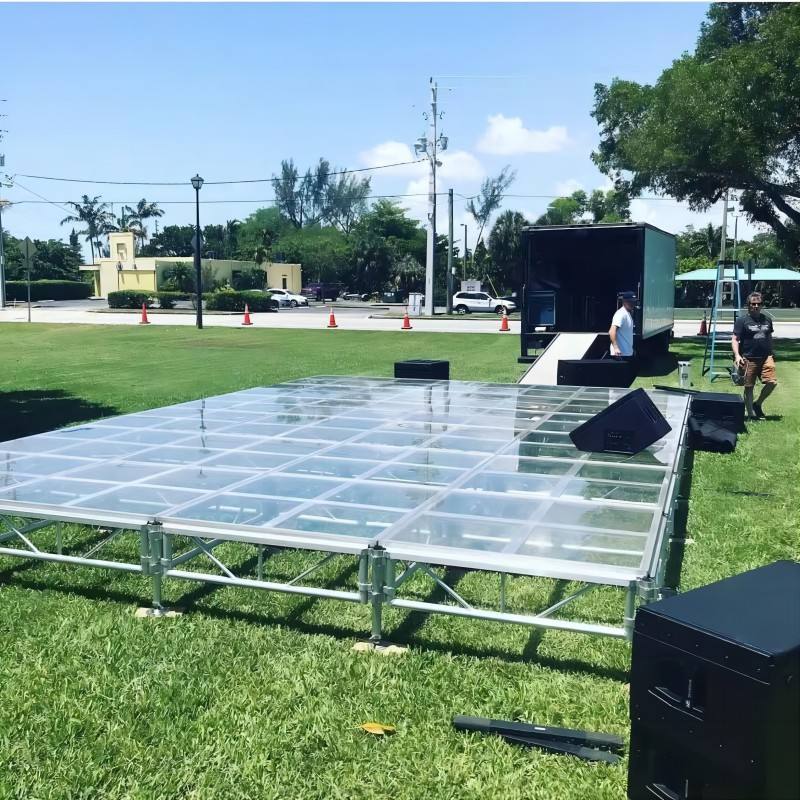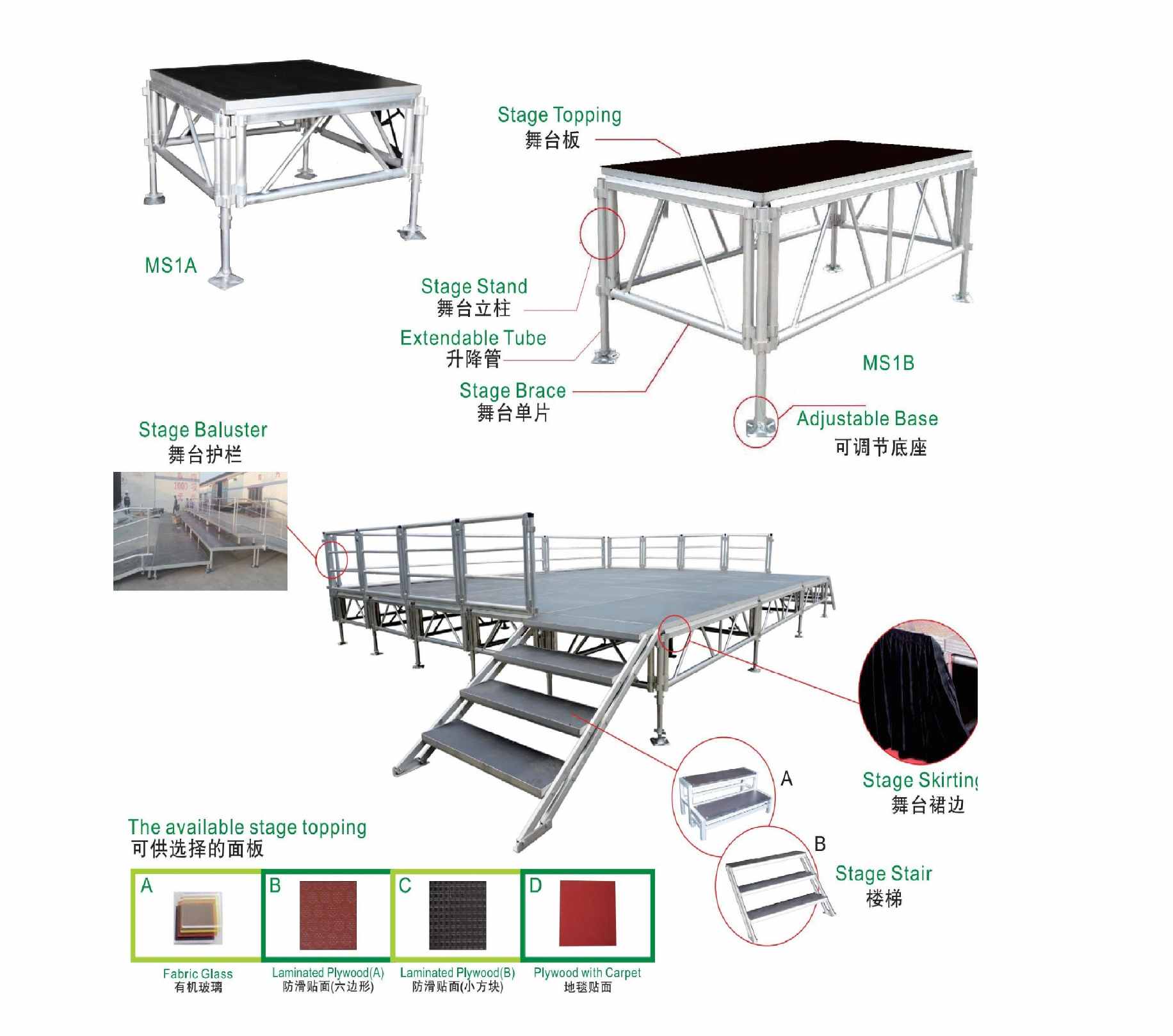What Are You Looking For?
What is a normal concert stage? The typical sizes of stages measure between 6m x 4m and 10m x 8m, which are often appropriate for small and middle- scale concerts. and most clients choose aluminum stage.the sizes of modular stage are 1.22x2.44m and 1.22x1.22m and 1x2m. the most welcome and selected stage heights are: 0.4-0.8m, 0.8-1.2m and 1.2-2m.

Setting the Stage: Understanding Concert Stage Sizes and Materials
From intimate acoustic sets to electrifying rock shows, concerts rely on a crucial element: the stage. It's more than just a platform; it's the focal point, the visual anchor, and the foundation for the entire performance. But with so many variables, how do you determine the right stage size and configuration? This blog post explores the typical dimensions, construction materials, and height considerations when designing concert stages, providing a comprehensive guide for event organizers, artists, and venue managers.
Understanding the Fundamentals: Stage Dimensions and Configurations
The ideal concert stage size depends on the scale of the event, the number of performers, and the overall aesthetic desired. A well-designed stage should create a balanced visual experience, ensuring the audience has a clear view of the performers and their instruments.
Common Stage Sizes:
Small-Scale Concerts:Stages ranging from **6m x 4m to 10m x 8m** are commonly used for intimate gigs, solo artists, and smaller bands. These dimensions offer ample space for a typical band setup while maintaining a close connection with the audience.
Mid-Scale Events: As the event grows, so does the stage. Dimensions often increase to **12m x 10m** or **15m x 12m**, accommodating larger bands, elaborate lighting rigs, and enhanced production elements.
Large-Scale Concerts and Festivals: For massive events, the stage can become truly colossal, spanning **20m x 15m** or even more. These stages are designed to accommodate complex sets, multiple performers, and expansive visual effects.
Modular Stage Systems: Flexibility and Scalability
Modular stages, composed of prefabricated sections, offer exceptional flexibility and scalability. These systems allow event organizers to create custom configurations based on the specific requirements of each event.

Common Modular Stage Dimensions:
1.22m x 2.44m: A standard size providing a versatile building block for constructing larger stages.
1.22m x 1.22m: Smaller sections ideal for creating unique configurations or extending existing stages.
1m x 2m: Another common dimension offering a balance between size and flexibility.
Material Matters: Choosing the Right Construction
The choice of stage material significantly impacts durability, aesthetics, and overall cost.
Aluminum Stage Systems: Highly favored due to their lightweight, robust construction, and ease of assembly. Aluminum stages are resistant to corrosion, making them suitable for both indoor and outdoor events.
Wooden Stages: Offer a classic aesthetic but require careful maintenance and may be more susceptible to weather damage.
Steel Stages: Strong and durable but heavier than aluminum, requiring specialized handling and transportation.
Setting the Right Height: A Balancing Act
Stage height plays a crucial role in audience visibility, performer comfort, and overall stage aesthetics.
Common Stage Heights:
0.4m - 0.8m: Suitable for smaller stages and intimate events, providing a low profile and a close connection between performers and the audience.
0.8m - 1.2m: A standard height for most concert stages, offering good visibility for the majority of the audience.
1.2m - 2m: Often used for larger stages and events requiring greater height for elaborate sets, complex lighting designs, and impressive visual impact.
Beyond the Basics: Customization and Stage Design
While standard dimensions provide a starting point, many concert stages go beyond the basic. Customized stage designs allow event organizers to create unique visual experiences, incorporating features like:
Ramps: Provide a dynamic entry point for performers, creating visual interest and connecting the stage to the audience.
Platforms and Levels: Add depth and visual interest, creating distinct performance areas and offering versatility for stage setups.
Backdrops: Enhance the visual impact, creating a thematic backdrop for the performance and enhancing the overall aesthetic.
Conclusion: A Stage for Every Event
Choosing the right concert stage size, material, and height is essential for creating a memorable and successful event. By carefully considering the specific needs of the performance, the event's scale, and the desired aesthetic, organizers can create a stage that complements the music, amplifies the experience, and leaves a lasting impression on both artists and audiences alike.